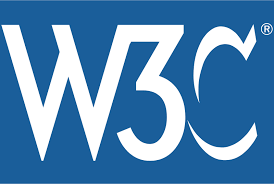W3C: The World Wide Web Consortium
 Grace Okoronta
Grace Okoronta
What does the World Wide Web Consortium do?
The main task of W3C is to define the technical standards and specifications that describe the fundamental technologies of the World Wide Web.
Web-related technologies such as HTML (Hypertext Mark-up Language), CSS (Cascading Style Sheets), XML (eXtensible Mark-up Language), and others are covered by standards.W3C is dedicated to ensuring that those with impairments can access the internet. To guarantee that web content is created and developed with accessibility in mind, it creates standards and rules like the Web Content Accessibility rules (WCAG).
Working groups made up of industry experts and member organisations are organised and facilitated by W3C. These teams work together to create particular aspects of web technology, tackling problems and coming up with fixes.
W3C creates and approves specifications using an organised procedure. Technical documents must be created, reviewed, and approved during this procedure in order for them to be published as W3C recommendations.
W3C works with a range of industry stakeholders, such as developers, academics, and tech corporations, to make sure that web standards fulfil the requirements of the larger community.
W3C offers educational resources and outreach efforts to increase understanding of online standards, best practices, and emerging technologies.
It organises workshops, webinars, and public events to disseminate knowledge and encourage community participation.W3C analyses technological advancements and web trends. It adjusts existing standards and creates new ones to suit growing issues and opportunities, ensuring that the World Wide Web continues to expand and be relevant.
W3C works to ensure the quality and interoperability of web technologies. This comprises testing, validation tools, and conformity testing programmes to ensure that standards are implemented consistently and reliably.
The W3C operates with openness and transparency, making drafts and discussions of standards available to the public. This enables for more widespread input, comment, and collaboration from the online community.
How W3C is used:
Learn about the official W3C specifications for web technologies including HTML, CSS, and more. These standards include thorough information about the syntax, structure, and behaviour of these technologies.
When creating websites or online apps, follow W3C guidelines to ensure cross-browser compatibility, accessibility, and future-proofing.
Use the most recent versions of HTML and CSS, as recommended by W3C, and adhere to the criteria for providing semantically relevant and accessible content.Integrate web accessibility concepts into your design and development processes. Consult the W3C's Web Content Accessibility Guidelines (WCAG) to make your website accessible to individuals with impairments.
To ensure that your HTML, CSS, and other web pages are correct, use the W3C validation tools. These tools assist you in identifying and resolving bugs in your code, ensuring that it meets W3C standards.
You may validate HTML using the W3C Mark-upw3 Validation Service. There is a CSS validation service provided by the W3C.Join the W3C community and mailing groups to remain up to date on the most recent web standards projects, discussions, and announcements.
Participate in debates, provide input, and support the community's efforts to shape the future of web technology.Explore W3C's educational offerings, which include tutorials, articles, and documentation. These materials can help you improve your grasp of web standards and best practices.
Keep track of W3C workshops, conferences, and events. These gatherings allow you to learn from professionals, participate in conversations, and network with others in the web development community. If your organisation is a W3C member, consider joining relevant W3C working groups. This gives you the opportunity to directly contribute to the creation of web standards and shape the web's future.
W3C provides test suites for a variety of specifications to assist developers in ensuring that their implementations meet standards. Using these test suites can help you check the validity of your web technologies.
The W3C periodically releases new versions of standards, and remaining up to date ensures that your online projects remain current. So check the W3C website on a regular basis for the latest specifications, recommendations, and announcements.
Subscribe to my newsletter
Read articles from Grace Okoronta directly inside your inbox. Subscribe to the newsletter, and don't miss out.
Written by
